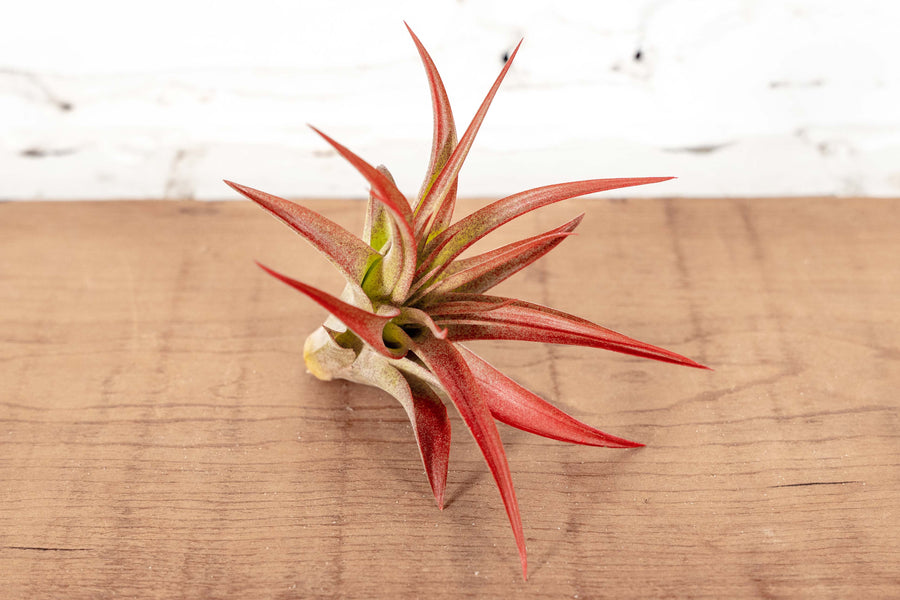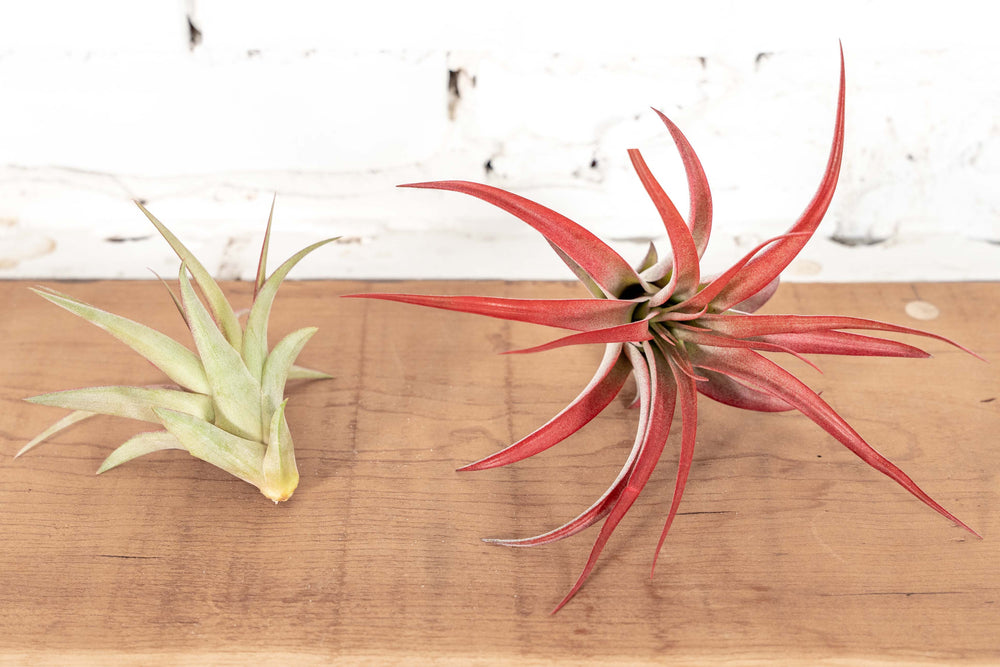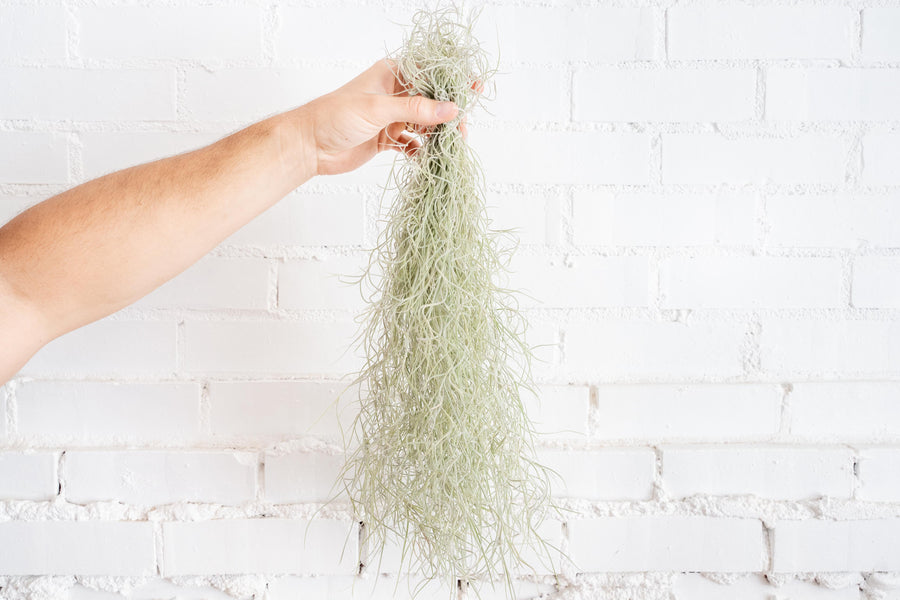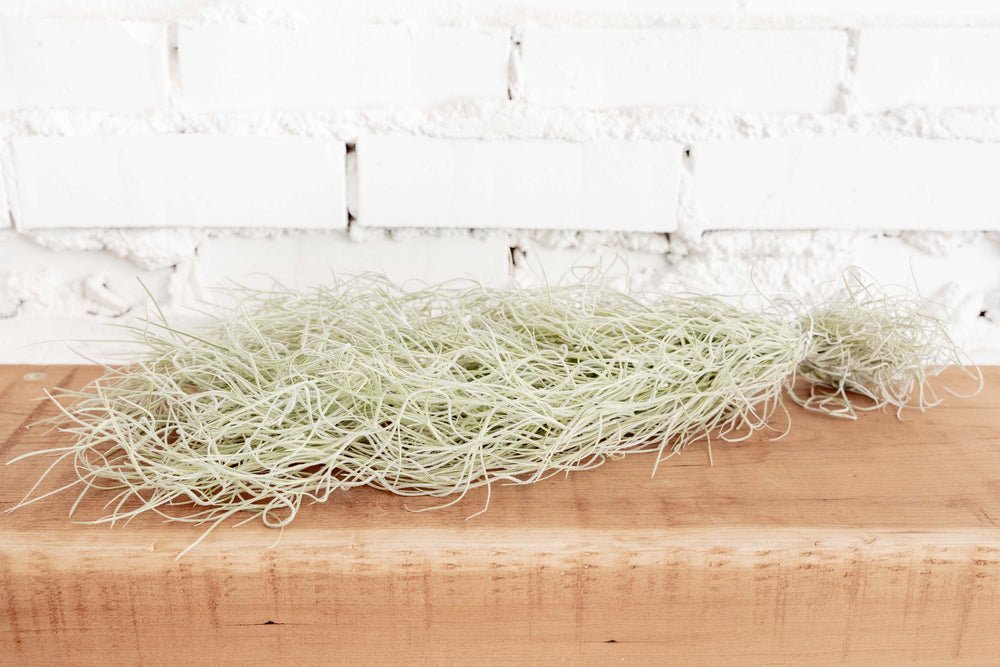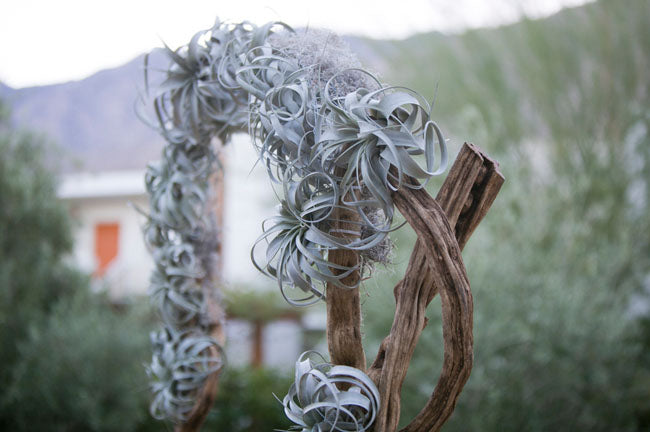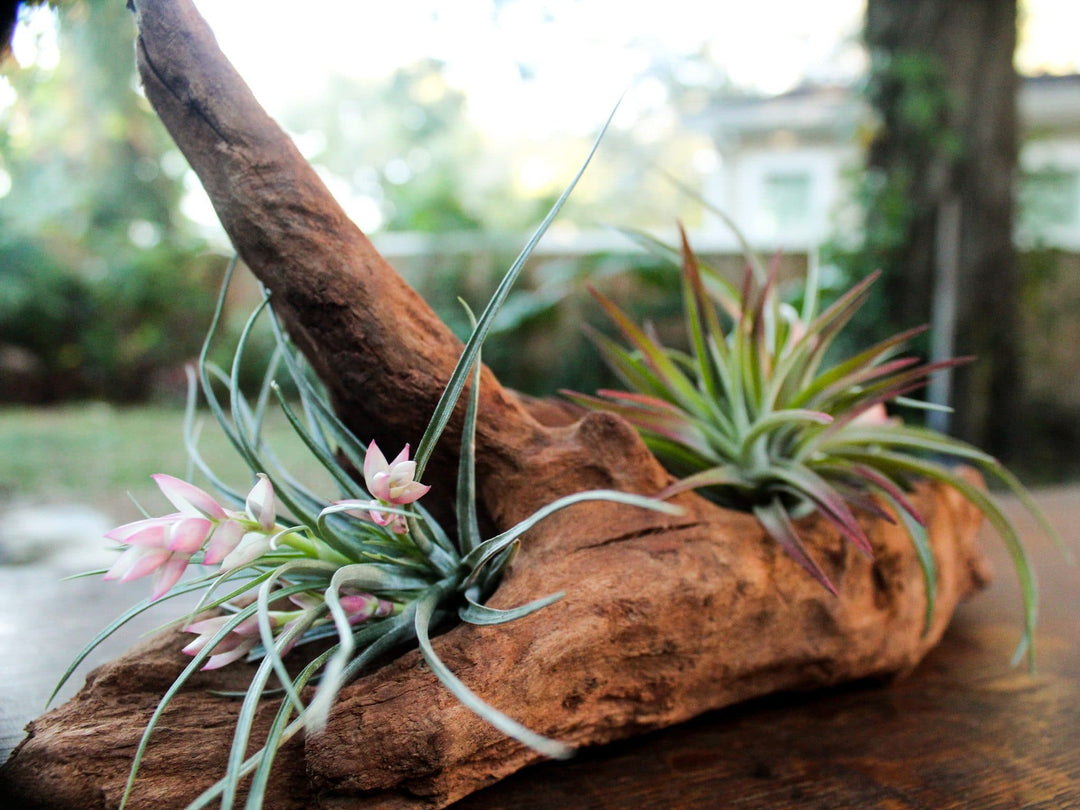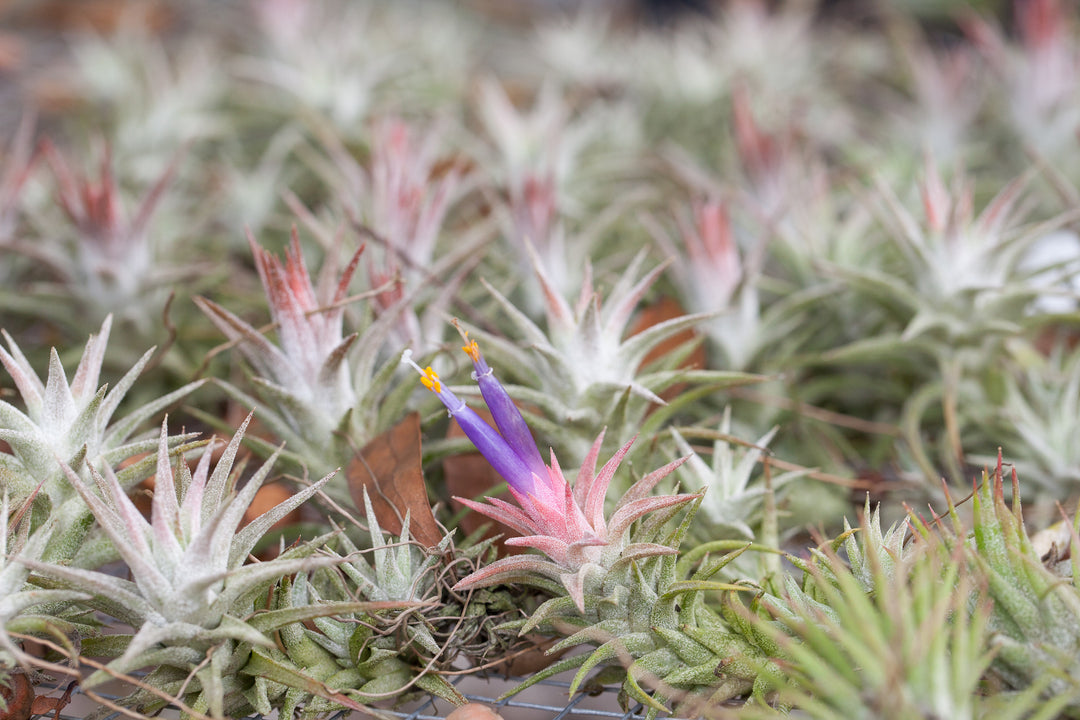"What is an Air Plant"
We get this question a lot, "What is an air plant?" and "What is a Tillandsia?". Often times people assume that they get their name because they are found in trees or on rock cliffs, hanging in the air. Or because they only need air to survive or even better yet because they "clean the air". All of these reasons are somewhat right, and definitely not wrong! In reality, air plants get their name due to the fact they generally found hanging in the air! They are able to pull moisture and nutrients from the air with dense scales on their leaves called "trichomes". While most plant get nutrients and water from their root system, this is where tillandsia really stand out from the norm.
Air plants are a nickname for Tillandsia, which is a genus in the Bromeliad family. There are over 600 different types of tillandsia or "Air Plants", a number that continues to grow as new species are being discovered. Most air plants are epiphytes, using their root system to attach themselves to a host. Interestingly enough, they do not use their roots to pull nutrients from their host rather just to anchor themselves. Some tillandsia air plants are even aerophytes, meaning their root system is very minimal and are used to anchor their base in shifting or loose desert sand/substrate. Some of the more green types of air plants can be potted in a very fast draining mix, although doing so can increase your risk for fungus/root rot due to extra moisture around the base of the plant, so we don't always recommend it unless you are very experienced in caring for that type of tillandsia. The lack of soil need allows air plants to be used in a wide array of design ideas! From terrariums to living walls, air plants are a unique alternative to traditional foliage.
In nature Tillandsia air plants can be found in a wide range of environments, from humid rainforests to dry and arid deserts. The bulk of tillandsia are found in Central America, South America, and Mexico but they are also native to parts of the Southern United States like Florida. Florida actually has several native air plants many which are on the protected list. You will find that the characteristics of each plant are fine tuned for their environments and can be broadly broken up into 3 different categories; Mesic, Xeric, and hydric. To learn more about the differences between these classifications, check out our article Mesic Vs. Xeric Plants which details the differences between these categories.
"How do you care for an air plant?" Our customers ask this one quite a bit, and it's a tough one to answer! The simple answer is that caring for an air plant depends on a lot of factors, with some of the more important ones being what type of tillandsia "air plant" and what type of environment you in? Are you keeping your air plant indoors or outdoors? Matching the right plant for your environment goes a long way in being a successful air plant parent. If you live in an area with a lot of humidity, you may find that the greener more "mesic" type air plants will do well. While on the other hand if you live in a place like Arizona, with dry hot air you will have better luck keeping xeric tillandsia like Xerographica and Duratii. We have found that for most environments and most air plant species, soaking two or three times a week for 20 minutes or so is enough hydration. More importantly is that your plant is able to dry out within a few hours and doesn't sit in moisture for prolonged periods. Want to learn more about caring for your tillandsia air plants? Check out our in-depth care info and for detailed info on waterings methods we have a great article about tips for watering your air plant.


